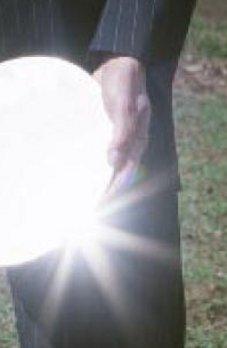Greenhouse as a source of energy: vision creation and vision
| Function / Domain: | Energy, agriculture |
| Illustration of: | System definition, Vision creation, Perverse link, Key idea for system innovation |
Greenhouse as a source of energy is an idea for system innovation from InnovationNetwork, the Dutch network organisation for system innovation in agriculture and ‘green space'. The Dutch Ministry of Agriculture established this network organisation for system innovations, as a response to the many developments confronting Dutch agriculture, such as environmental and food safety issues, growing competition, pressure on space and changes in the relationship with civil society, which were reflected, among other things, in growing concern for animal welfare in the intensive livestock farming sector. These developments called for radical innovations, the ministry felt.
Initial definition of the system
One of the first areas addressed by the InnovationNetwork was greenhouse horticulture. The project managers from InnovationNetwork and its partner the Stichting Innovatie Glastuinbouw Nederland (SIGN) began with a survey entitled Greenhouse horticulture 2020: towards a vital, sustainable and respected greenhouse horticulture sector to further define the system. During brainstorming sessions with opinion leaders they produced a list of subjects of general relevance for which innovations were needed. One of the selected themes was energy.
The vision creation process began with defining the problem: horticultural production processes in greenhouses account for more than 10% of total natural gas consumption in the Netherlands, cause a lot of emissions of the greenhouse gas CO2 and generate high costs for horticulturalists. Although the greenhouse horticulture sector was trying to increase energy efficiency and reduce the volume of energy per unit of product, and had been making significant progress, the total energy consumption - expressed in cubic metres of gas - remained very high. The social challenge that the InnovationNetwork formulated was to achieve a drastic reduction in the sector's total energy consumption: a radical trend reversal. But how to achieve that?
Key idea for system innovation
Van Oosten and Huizing, the project managers, read up on the subject and held discussions with experts and innovators. But after a year they had still not found a good idea for reversing the trend. In a final brainstorming session, Huizing mentioned that the sun releases more energy per square metre than a greenhouse uses per square metre. Van Oosten suggested that the horticulture sector could capture that solar energy. That led to the key idea for system innovation of using a greenhouse as a source of energy. In theory, the greenhouse horticulture sector could even become an energy supplier. The key idea for system innovation therefore overcame the 'perverse' link between greenhouse horticulture and energy use.
Initial elaboration in a robust and feasible idea
After the brainstorming session, experts were approached to investigate whether the idea of the greenhouse as a source of energy was technically feasible and could really take hold. The initial response was negative. But Van Oosten clung to his idea because of the InnovationNetwork's ambitions for system innovation. He eventually found a physicist who, after making some quick calculations, concluded that it should be possible to reduce energy consumption by 80% with innovative heat exchangers. He then wrote an essay in support of that conclusion. Three strategies were suggested that would have to be integrated within a greenhouse: energy saving (closed greenhouse, insulation), the storage of surplus energy (storing heat deep in the ground, in so-called aquifers) and using the efficient heat exchanger Fiwihex. But InnovationNetwork was not putting all of its eggs in one basket. A second consultant worked out three variants of energy-efficient greenhouse horticulture: from the maximum reduction of the use of fossil fuels to the maximum use of renewable energy, where possible with a surplus of renewable energy.
Further research into reactions and feasibility
Since then the InnovationNetwork and SIGN have been pursuing both of these avenues to acquire the broadest possible impression of the possibilities of the Greenhouse as a Source of Energy concept. One direction led to a pilot project in 2006 and more greenhouses that deliverde energy later on, while the second generated a lot of new ideas for energy production and the use of renewable energy.
But a lot of work had to be done before that point was reached. For example, the enthusiasm for and feasibility of the ideas generated in the first track had to be assessed in a workshop with agriculture and energy experts. The ideas were also evaluated by a horticultural engineering firm, which published a report on the potential energy savings. The designs were modified on the basis of the comments received.
Promotion and lobbying for solution of structural problems
Van Oosten also campaigned to promote the idea of the greenhouse as a source of energy. He gave enthusiastic talks on the subject and took part in a competition on innovation and sustainability (which he won). And he did a lot of lobbying to resolve structural problems in areas such as financing and regulation. For example, a solution had to be found for the problem that the EU would regard a government subsidy for a pilot project, co-financed by the private sector, as unlawful state aid. And the Horticulture Commodity Board had to find funding for the project within an existing energy programme.
Follow-up initiatives
A contest was organised at the beginning of 2006 to generate new designs. It yielded more than 40 ideas for drastically reducing energy consumption from consortia from around the world. Greenhouse as a Source of Energy also became a sub-programme in the Dutch energy transition programme.
Sources
